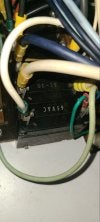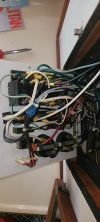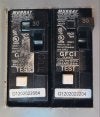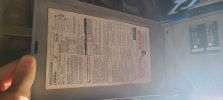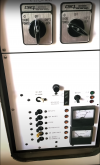Dehli
Member
Hello, I'm trying to debug an electrical issue I'm experiencing on my Sea Ray Express Cruiser 340 (1985). I have it hooked up to shore power and the dock's circuit breaker will randomly trip (sometimes it takes a few hours before it trips).
I have unplugged everything near the boat's batteries, and I've progressively switched everything off on the boat until it stopped tripping the dock's circuit breaker. It seems to be related to the 30A A/C main switch on the boat. If I only have that on it will trip the dock, but when I switch it off it won't.
I have also discovered that by switching the master switch to off while the 30A A/C main switch is on, it will consistently trip the dock's circuit breaker. I have uploaded a minute long video better showing this:
I am not using an extension splitter, just have one cord plugged directly into the main plug (not using the Air Condition side).
My first thought it to replace the main breaker but I'm wondering if there are any other tips or suggestions for what I should try?
Thanks in advance for any help!
I have unplugged everything near the boat's batteries, and I've progressively switched everything off on the boat until it stopped tripping the dock's circuit breaker. It seems to be related to the 30A A/C main switch on the boat. If I only have that on it will trip the dock, but when I switch it off it won't.
I have also discovered that by switching the master switch to off while the 30A A/C main switch is on, it will consistently trip the dock's circuit breaker. I have uploaded a minute long video better showing this:
I am not using an extension splitter, just have one cord plugged directly into the main plug (not using the Air Condition side).
My first thought it to replace the main breaker but I'm wondering if there are any other tips or suggestions for what I should try?
Thanks in advance for any help!


